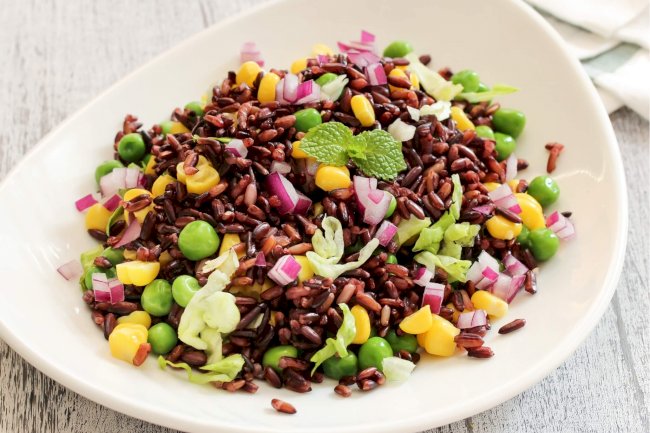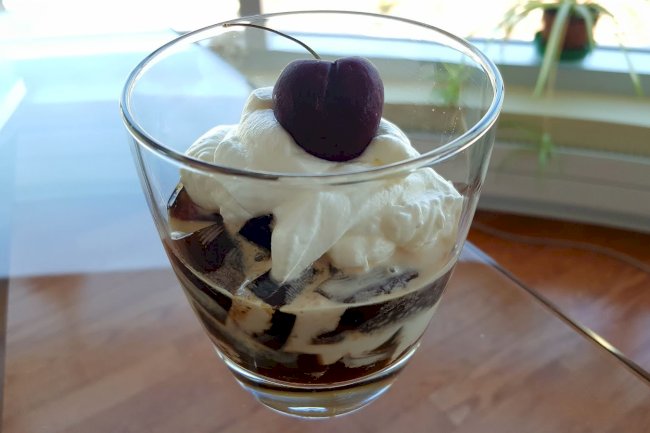vadapav recipe
vadapav recipe
vadapav recipe
Ingredients:
- Pav – dinner rolls, get the Pav Recipe here.
- Batata vada – fried potato stuffed fritter.
- Green Chutney – made with coriander (cilantro) or mint & coriander.
- Tamarind Chutney– sweet tangy chutney made with tamarind, jaggery and spices.
- Dry Garlic Chutney – spicy chutney made with garlic and coconut.
Recipe :
-
1. Boil 2 large potatoes that weigh about 350 grams. Peel and then mash them with a fork in a bowl.
You can boil or steam the potatoes in a pan, Instant pot or pressure cooker. Remember to drain the water very well from the boiled potatoes before you mash them.
Also crush 6 to 7 small/medium-sized garlic cloves and 1 to 2 green chilies in a mortar pestle.
-
2. Heat 2 to 3 teaspoons of oil in a small pan. Add ½ a teaspoon of mustard seeds and crackle them. Then add 7 to 8 curry leaves and a pinch of asafoetida (hing). Stir and sauté for about 5 seconds.
-
3. Add the crushed garlic cloves and green chilies mixture to the pan. Add ⅛ teaspoon of turmeric powder (about 2 to 3 pinches).
-
4. Stir for some seconds or until the raw aroma of garlic goes away.
-
5. Pour this tempering mixture together with the oil to the mashed potatoes.
-
6. Add 1 to 2 tablespoons of chopped coriander leaves and salt as required.
-
7. Mix everything well. Then make small to medium balls from the mashed potato mixture. Flatten these balls a bit. Cover and keep aside.
-
8. In another bowl, make a smooth batter from 1 to 1.25 cups besan (gram flour), ⅛ teaspoon turmeric powder (about 2 to 3 pinches), a pinch of asafoetida (hing), a pinch of baking soda (optional), salt and ½ cup water or as needed.
The batter should have a medium-thick flowing consistency. It should not be too thick or thin. If the batter becomes thin, add 1 or 2 tablespoons of gram flour. If the batter becomes thick, then add 1 or 2 tablespoons of water. -
9. Dip the slightly flattened potato balls in the batter and coat it evenly with the batter.
-
10. Before you dip the batata vada in the batter, heat oil in a pan or wok (kadai). When the oil becomes hot then dip the batata vada in the batter to coat as shown in the above steps.
Carefully and gently drop these batter coated potato balls in medium hot oil.
Note: You can read more details on the frying temperature in the ‘expert tips’ section below.
-
11. Depending on the size of the kadai or pan, you can add more or less of the vada while frying. But don’t overcrowd the pan
-
12. When one side firms up, becomes slightly crisp and golden then only turn over gently with a slotted spoon. Fry the second side. This way deep fry them till golden, turning a couple of times as needed.
-
13. Drain them on kitchen paper towels. Make all batata vada this way and set aside.
-
14. Serve them when they are still hot or warm. Put all the chutneys and pav on your work surface. Slice the pav without breaking it into two parts and set aside.
If you don’t have sweet chutney, then make the vada pav with green chutney. The green chutney and sweet chutney recipes are in the recipe card below.
You can make these two chutney recipes some hours ahead or a day before and refrigerate.
-
15. Spread both the green chutney and sweet chutney on the sliced pav. You can also spread green chutney on one side and sweet chutney on the other side.
-
16. Sprinkle the dry garlic chutney on the pav. This step is optional and you can skip it if you don’t have garlic chutney. Place the hot batata vada in the bread slices.
-
18. Serve vada pav immediately or else the pav becomes soggy. You can also serve some salted fried green chilies and both of the chutneys with it.
It makes for a good filling evening snack high on carbs. A cup of hot tea or coffee can also be served as a side beverage.
Tips :
-
When frying batata vada the oil should be moderately hot at a temperature of 180 to 190 degrees Celsius (360 degrees to 375 degrees Fahrenheit). You can use a candy or deep-fry thermometer to check the temperature of the oil.
-
Alternatively, you can add some droplets of the batter to the oil. If the droplets rise to the surface gradually and start bubbling then the oil is ready. However, if the droplets rise slowly or get submerged inside then the oil is not hot enough. If the droplets rise too quickly and get burnt or browned then the oil is too hot.
-
When batata vada is fried in oil that is too hot, it remains undercooked on the inside and burnt and overcooked on the outside. Frying them in oil that is not hot enough causes them to absorb more oil and become soggy and oily.
-
You can alter the amount of spices as per your taste preference. In some Maharashtrian cities like Kolhapur, the vada pav served in the street is very spicy. My recipe does not make for a spicy vada pav. If you want to make it spicy then add more green chilies.




















